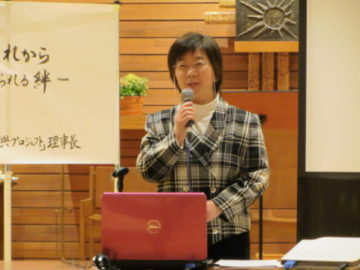As I have already said, scientists have diverse opinions about radiation. Some insist on evacuation because they think it’s dangerous, while others think the level of radiation is safe. It seems that scientists tend to emphasize the danger, while doctors tend to think it’s alright. A radiologist in Osaka said in an e-mail to me that he had been far more exposed to radiation than people in Fukushima because he had been studying radiology for 17 years, yet he is doing fine. A physician in Nagasaki pointed out that the danger of lifestyle-related diseases is greater than the effects of radiation. I was also told in Niigata, where I visited to give a talk, that although scientists claim Fukushima is dangerous and people must leave, what they are saying is 90 percent false because they are not expert in human body. Even the experts have varying opinions.
In Fukushima, along with the weather forecast, we have reports on daily measurement of radiation level in various locations. On television, programs on the 2011 Great East Japan Earthquake are still being aired. I heard that other prefectures no longer air such programs. This is one of the instances where I feel a gap between Fukushima and other prefectures. When I visited a place in Tokyo for the first time to sell vegetables, someone said to me, “Fukushima has already recovered, isn’t it?” I was too astonished to answer. Recovery hasn’t even begun in Fukushima.
People are starting to forget about the earthquake and tsunami. It will be fine if people forget about radiation contamination of produce because radiation is no longer detected from our vegetables. But many people still go on avoiding produce grown in Fukushima, and I find that unfortunate. People forget the hardship of Fukushima but hold on to unfounded rumors about food contamination.
The level of radiation decides the amount of compensation payment one will receive from TEPCO. When people from the same village receive different amount of money according to the level of radiation, it leads to rift among the villagers. Is this discord the intention of TEPCO and the Government? The division among people is weakening the force to protest against TEPCO and the government.
Misconception about Fukushima still persists. I went to Miyagi Prefecture to do voluntary work in May 2011. When I told them I was from Fukushima, a priest who came to help from another prefecture said, “You brought us radiation.” I was astonished to learn what other people thought about us. Maybe the priest didn’t mean that much, but I was petrified to hear the comment. There are people even in the Catholic Church who have strong repulsion toward radiation. There was a person, who made a complaint to the priest of a church where we were selling Fukushima-grown vegetables, saying: “They have radiation on the soles of their shoes! Their cars are also contaminated! Why did you allow such people to enter the premises?” Our activities to sell Fukushima agricultural produce have many dedicated supporters, but there are still many people who would not support us at all.
Among residents in Fukushima, there are those who evacuated because of the earthquake or tsunami; while others who had to evacuate because of the nuclear disaster. Differences in circumstance and background make mutual understanding difficult. As a result, friction has occurred. Compensation amounts also differ substantially; causing envy and disharmony within and between communities.
There are mothers with small children who have evacuated voluntarily from areas with no evacuation order issued, for the safety of their children. Voluntary evacuees receive no compensation, but they have the financial burden of maintaining two households. Between married couples, priorities also differ. For mothers, the children come first, while fathers are concerned about employment. Children are forced to leave their friends and vent their frustration on their mothers. Families become divided and are breaking up. The Nuclear Fallout caused not only environmental contamination but also, the break-up of human relationships.
Residents of temporary housing have typically gone through seven or eight relocations before they arrived at their present home. First, they stayed at the gymnasium. That place lacked privacy, so they moved to hotels or inns. When temporary housing became available, they moved again. Temporary prefabricated housing is cramped and has thin walls. You can hear every single sound your neighbor makes. The rooms are so small that adults cannot watch TV when children are studying. It’s hard to find a quiet spot to prepare for the entrance exam. Such situation prompted people to search for better dwellings. They move on to public assisted residence, or homes of relatives. They continue moving until they find a right place.

